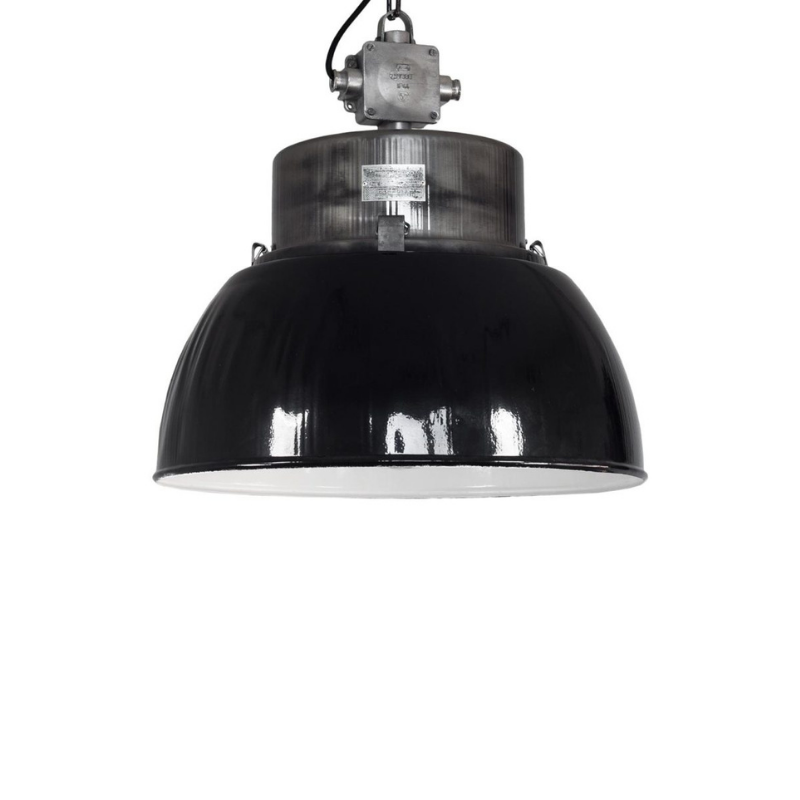Actually DCW...
I firmly believe that the law should protect active design patents and I also think that mostly, it does work. At least from my experience in the world of biotech and pharmaceuticals. There are very precise laws about the development of generic drugs, the lifespan that is granted the original producer of a compound and the marketing of generics versus the name brand product.
I don't have any exposure as to how this works in the product or furnishing design fields, but I sure have seen it work in the world of drug development.
But you are right this is one of those things that tangle people up. It's like a cultural difference or a socialogical one. I believe the law allows the development of reproductions or as I am more familiar with, generics. Other people believe that these repros/generics are unfair to the designer or the producer of the original design. I wonder if they would feel the same way if a big name ultrarich pharmaceutical company could block the production of a generic drug by a smaller production company. Especially when that smaller company would produce a less expensive version that Medicaid would actually cover so that their grandmother with cardiac disease might live longer.
Wow ? a lot of talk while I was on vacation.
First, thank you Ms Johnson for taking the time to respond and confirm, as I suspected Modernica is behind the image stealing issue and retailers such as yourself just perpetuate their values. I am referring to the image of the Wire Chair with the black leather bikini pad. And yes Modernica is the ?official? manufacturer of the ?Case Study Furniture? which is a name they ?borrowed? from the January 1949 Arts and Architecture magazine Case Study House program, in which Charles Eames and Eero Saarinen participated along with several other notable personalities of the time. So in reality Modernica has authorized themselves to sell the non-designer authorized/licensed product designs they manufacture ? And who said bait-and-switch days are over? By the way they had to come up with some name that would give them credibility and a connection to Eames because Herman Miller owns the rights to the Eames name and since ?Case Study? was closely linked with MCM and Eames ? it worked. Also, I noticed how you very cleverly placed Charles Eames? photo above the link to the Case Study product with a note that proclaims Charles Eames to be the designer of the Eames Chair ? or how if you search the name Charles Eames on your site and it takes you right to the Modernica product page ? what a perfectly innocent way to drive uneducated consumers to non-authentic product purchases. But of course if one were to believe everything they read on your site we would never question you are selling anything but the real thing ? your proclamations have such conviction that you are telling the truth and nothing but ? you even guarantee it! If you truly believe Modernica is the authorized manufacturer of these products ? why would you even consider using Charles Eames to sell them ? seems like a search using Jay and Frank Novak should turn up Modernica? I mean clearly everyone gets they are Charles Eames Designs ? so give the guy and his family their due!
Further more when a manufacturer such as Vitra or Herman Miller allows resellers to take advantage of their brand along side knock-off products (or knock-off brands such as Modernica) it creates a relationship link in the mind of the consumer ? and allows resellers to do just what you did ? claim the credibility of the real ?brand?. I would not call Vitra anticompetitive for not selling you product that you position along side Modernica?s ? I would say they are protecting their hard earned brand name and reputation! I hope you aren?t planning to take Vitra to court with this notion of violating the Sherman Antitrust Act because they won?t sell to you any longer
con't
Sorry I'm not able to post an image here (anyone help?) but I do have an image from Accurato with an overlay of the HMI image from their website of the "borrowed" image of the Eames Wire Chair. Now, I don't want to get into why HMI has to price the product higher ? but perhaps if they didn?t have to foot the bill for photography that Modernica and others (we won?t say Accurato again) ?borrow??. Humm? And yes ? the more people buy knock-offs the less money companies like Herman Miller have to put into releasing additional authentic designs or defend their design rights in court. Would seem to be the same for drug companies - they need to sell at a very high price while they have the rights to the products they spent years developing, testing and defending - guess that is the way - get as much as you can now because it won't last. Maybe if companies felt secure that they would be able to make up their investment over more years they could lower the initial go to market pricing - save more grandmas?? That seems like a departure from the original conversation - sorry.
Second, while I appreciate the thoughtful and in-depth legal discussion ? it does not alter the fact that Modernica and others are infringing on the Trade Dress rights Herman Miller owns in the US for the Eames product, (they also have some of the Nelson products and the Noguchi table) by producing these designs. See http://legal-dictionary.thefreedictionary.com/Trade+Dress for definition.
Lastly, to build upon a legacy of historic designs and bring them forward with new fresh innovations and claim as ?new? is one thing? I mean look at what Apple has done for the Bell Telephone ? but to re-produce a product with as claimed the original tooling ? (another debate for later) and then claim to be producing the ?authorized or licensed? product feels deceitful to me. Although, I do give them the Prince Charles chair as a new innovation built on an old design (but really my personal opinion ? Yuck!) ? and still they had to have some sort of reference to Charles Eames to bring it some legitimacy I guess.
Thank you everyone for participating in the discussion ? hopefully we can respect and protect artist?s and designer?s creative work and legacies.
Trade Dress?
That refers to packaging, labeling and marketing, FofD, NOT to the design specs. Good heavens, I can not believe that there is such a perpetuating belief that the estate of these designers are actually being slighted. That is such a misguided concept. Our Rule of Law states otherwise for very good reason. I am gobsmacked that this issues continues to make so many people angry, there is nothing illegal being done, not even anything sneaky or underhanded. If you don't want to buy repro's, even well-made faithful repros, then don't. That's your right. But insisting that there is a real legal issue here is absolutely unsupportable. That's why HM and KNoll have yet to prove any IP/patent issues in court. They can't the designs are in the public domain. The only thing they can do is to copyright or license the names, colors, fabrics etc that are indeed trade dress. Any reproduction company that is dumb enough not to avoid running into a trade dress infringement is probably not making a quality product anyway. And buying crap truly is a crime.
Olive...
I am parochial enough to the 20th Century and to the twilight of free enterprise and market economics to think it wise to incentivise invention with asymmetrical right of benefit for a period, after which the advancement reverts to anyone who chooses to build and market that advancement. The essense of patents, etc., is to stimulate invention by rewarding the inventor for a time and the broadcast the invention to all players immediately thereafter.
But I am progressive enough to understand that patents have costs and benefits for a society and for its oligarchy.
The benefit to society I have already outlined. It accelerates development by incentivising it.
The obvious cost to society is that many years pass before the invention can be broadcast throughout the economy with the full force of market efficiencies.
The less obvious cost to society is that this initial period without competition in which the new invention speads more slowly than it otherwise might, becomes a period in which the new invention/technology can be integrated into oligopoly control with less cost to the oligopolies and the oligarchy that controls those oligopolies. Hence, the patent not only prevents the small player from competing initially, it does, when oligarchy so chooses, prevent small players from competing indefinitely, because the oligopolies take over the invention technology before the small players ever get a chance at competing. This is an enormous cost to society, because oligopolies are price fixers who typically operate with greater margins because of their cooperative tendencies.
The benefit to oligarchy is similar to the benefit to society. Patents incentivise inventions, thus giving the oligarchy a society rich in technological advancement to rule with and project force with in imperial activities. But there is another benefit to oligarchy already alluded to. Patents create a time period where it is relatively cheap for oligopoly to coopt the new invention/technology.
continued
The cost to oligarchy of patents is almost nothing in the short term, but can be enormous in the long term, when the oligarchy faces a foreign competitor with more free enterprise and less oligopoly. All great empires fail primarily because of this cost that accrues over time. Over time, the empire becomes less and less competitive economically, due to its great oligopolies that innovate increasingly slowly and ineffectually and operate increasingly less efficiently and profitably. In turn the empire necessarily has to subsidize the cost of its vast oligopolies by conquering and stealing resources and wealth and consumers to increase the margins of its increasingly inefficient oligopolies, by shifting the cost of acquiring, say, oil, onto the tax paying public (who must pay for the war to steal the oil), rather than being born directly by the oilcos in the oligopoly. Don't mean to pick on big oil either. Almost all major producer markets are long since oligopolized.
So: to argue for patents, one must recognize that patents not only help the inventor, but also are a cornerstone of the enabling and perpetuating framework of oligarchy, oligopoly and empire.
Further, if one seriously wanted to steer one's country away from oligarchy, oligopoly and empire, patent law might well be a part of the institutional framework that one would be most keen on altering, so as to make it less prone to enable oligarchy, oligopoly and empire.
There are a number of ways of stimulating invention that could be pursued (some of which include right of exclusive benefit and others that do not). Alas most all would be strongly resisted by existing oligarchy, oligopoly and empire.
I hope this short discussion lifts DAers thinking about patents out of the rather simplistic notion of Player A getting rich off his patent for a few years, and then everyone in society benefiting from it later. Reality is more complicated, but still fairly comprehensible.
To butt in quickly and addres...
To butt in quickly and address Koens point, I've never had a slavish regard for the big name manufacturers, in fact I regularly mention the benefits of patronising a local furniture makers on the forum and elsewhere.
I do view the big name manufacturers with some respect but see their dominance as a challenge and an oppurtunity for objects which reflect where and how they are made (and by who) to shine even more brightly, the Herman Millers of this world produce furniture that is good quality, desirable and as we will come to see in a few years more and more homogenous, their time will pass, just like the Barcelona chairs.
I am not concerned, in fact I'm more optimistic about the state of design now than I've ever been before, the current (and somewhat regretable) boom in production will be winnowed and we'll be left with the wheat. The coming challenges for designers will provide a long needed reason for existence, rather than the endless self indulgence which (myself included) young designers have guilty of for some time.
Heath...
I too cop to optimism about design's future. The world is being intentionally put through a financial, economic and political restructuring by the owners of the central bank for two reasons: 1)to make sure all of the recent growth does not let certain countries get off the central bank owners' leash; and 2) to ready the world for the greatest spike in growth and wealth generation that the world has ever seen by several orders of magnitude.
The final brick in the foundation of this fantastic tidal wave of future growth may possibly just have been laid in place by some relatively little covered research from the Royal Institute of Technology in Sweden.
Not some oil, but likely most, or all oil is abiotic; i.e., it does not come from rotting bio-mass being compressed by the great weight of crust layers into oil, then coal then diamonds.
Oil comes from an on-going chemical process in the upper mantel and is forced upwards through cracks and crevices in reservoirs in the earth's crust.
It means, if test results can be duplicated by other scientfic teams, that the earth is not only never going to run out of oil (it is always being replenished and at a fairly rapid rate in some cases), it is going to be increasingly aways with it.
We have lived through an era of cheap energy from cheap oil. We may be about to enter an era of dirt cheap energy from ubiquitous oil.
And the beauty of it is: the research suggests that oil should be found just about everywhere.
" Come and listen to a story about a man named Jed
A poor mountaineer, barely kept his family fed,
Then one day he was shootin at some food,
And up through the ground came a bubblin' crude.
Oil that is, black gold, Texas tea.
Well the first thing you know ol' Jed's a millionaire,
Kinfolk said Jed move away from there
Said Californy is the place you ought to be
So they loaded up the truck and moved to Beverly.
Hills, that is.
Swimmin pools, movie stars."
Hope springs eternal, especially whenever oil does, too.
http://www.digitaljournal.com/article/279153
DCW, thank you for your eloquence,
I think you give a very convincing explanation of why patents are vital and why they function as they do. The part about oligarchical control is the less pleasant end of it, but any Rule of Law will have negative consequences. The idea of the governing body benefiting first from a new technology is, I guess, a reasonable tradeoff for the overall benefit of development.
I'm glad to see you so clearly demonstrate that patents exist to the initial preferential benefit of the patent holder. That point seems to be at the center of the rabid protectionism that folks here exhibit when it comes to classic modernist design. It seems not to be understood that the benefit was duly given to the designer, up front in his or her lifetime. Now it's society's turn, free market economies may now enjoy the ability to profit from the design. Caveat Emptor, my favorite saying, holds true during this time. Since the design is in the public domain, that means that people with lower standards and higher tendencies toward greed will make products that are unworthy of the original design. We, as educated consumers, have a responsibility not to enable these producers. But to think that the original designer or producer has not gotten their fair share and are somehow being ripped off by the existence of other suppliers is to deny the entire concept of a free market society. Which, in my viewpoint, is naivete' at it most ridiculous.
Lastly, the oil thing scares the crap out of me. Ubiquitous oil means never ending CO2 release. Just because our planet might make oil (and that's to be debated) doesn't mean we should burn it if it's ultimately going to destroy the planet.
Dear friend of design
It is awfully difficult to argue with someone who signs of as ?friend of design? and closes his/her argument with an appeal to protect the rights of creative people. I think we all acknowledge that a fair remuneration for innovative and creative work, allows it to generate an income for whoever wants to dedicate his or her working hours to that kind of work. Although research shows that most people in that line of work are not motivated by financial gain, not protecting some level of intellectual property would reduce that creative and inventive activity considerably. The argument is not about that principle but about the fact that for very good reasons, among them those outlined by Olive, DCWilson and myself, the time period for that protection is limited. I am surprised that you ignore that argument which is not an opinion but factual.
I know that running out of legal means to keep the intellectual property, some of the major players have invoked the trade-dress part of the trade-mark legislation. (I am adding a link that might work faster than the one you suggested). To my knowledge they have not succeeded (yet). Not that there are no precedents. If I remember well Artimede?s Tizio lamp managed to get the courts to agree with Artimede?s point of view but that was exceptional because the lamps was better known than the manufacturer or the designer. In my opinion these more recent attempts should not succeed simply because it was never the intention of that law to overtake the design patent laws. I know that judges have the tendency to lean toward public opinion and in this case toward protectionist interpretations of the law. But that does not change the spirit and the intentions of the law. Being in part depending on royalties for my income as an industrial designer, I am of course tempted by agreeing with you, but my own experience tells me otherwise. Designers usually accept two ways of being remunerated for their creative services, one is by royalties, most often proceeded by and advance on royalties or on an hourly rate, or a combination of both. Lump sums are not excluded but unusual. In my experience any design service paid by royalties has by far exceeded the ones paid by the hour?and an hour of senior design work is not cheap!
In spite of that my contracts include a article that states that royalties will be terminated whenever someone else copies the products and the designer (me) is not able to defend his I.D. rights in court?which is almost never because the costs in the U.S. to sue a company that copies you, are
way beyond the revenues generated by most products (any guess between 100,000 and double that amount is a realistic minimum cost). In other words it has happened that instead of a reasonable number of years my royalties were cut off after three years, and yet those three years exceeded in income the number of hours spend on that particular project x my hourly rate.
http://www.intellectlawgroup.com/additionalservices/tradedress.html
cont.
When I say that it exceeds I do not mean that it was slightly higher, it means in most cases that it was 5 to 20 times higher. I remember one simple product that I worked on for less than two days, including final production drawings. It generated in a bad year $18.000 in royalties and in a good year $26.000 for many years. I do not think that you will easily find an experienced designer that would not confirm that royalty payments always and largely exceed the hourly rates for that same project. Of course I do not include products that do not find their market, but you do not need a designer to develop those?
I think the interesting part of this discussion is not the legislation as such but what the legislation achieves and what is was intended to achieve. For good reasons the copyright law protects a work that is covered by it to 50 years after the end of the year in which the author died. It allows the moral right of paternity to be respected and prevents anyone to attribute the work to someone else. But that is different from the patrimonial right that generates an income. Instead of fooling around with terms related to the products ore their period, a chair designed by Charles and Ray Eames should always be credited to the designers. But giving the designers that form of respect does not include the right to be paid for it. Unfortunately the mis-interpretation of the spirit of the law has created a situation in which the designs can not always be credited to the designer?and that?s a shame.
To Lucifersum, thank you so much for the pics of the bases & legs!
I finally have my first piece of furniture that I have been drooling over for over 10 years! It's a Herman Miller manufactured Charles Eames designed fiberglass armchair and up until know I finally realized why I haven't seen an exact picture of it. I'm pretty sure it's the pic on the bottom left. It has what looks to be galvanized legs with swiveling black plastic grommets on the ends. Problem is that it's missing one of the grommet and sleeve that mounts it in the leg. Any ideas on where to find these parts? Also there is some surface rust on 2 of the legs so I would love any input on how to remove it with minimal or no damage. The only print I can find is the Herman Miller logo with the big H obviously. It's off white to the eye and shows random signs of wear and age, so is the type of legs a clue to it's manufacture year(s) ? Finally what's the best solution to clean the chair with? My cousin had it sitting on his back porch and when he saw me get giddy like a child on X-mas morning after seeing the HM logo he said I could take it because I would give it a little TLC and appreciate it. Anyways any response would be greatly appreciated. Thanks.
If you need any help, please contact us at – info@designaddict.com









